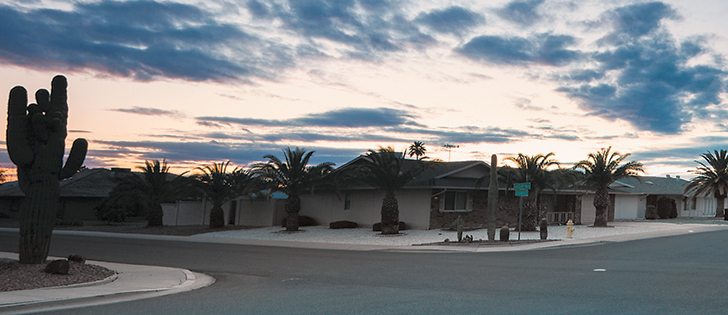Rick and Sandy retired to Blind Bay, B.C., a decade ago.
The Ottawa couple thought they had landed in paradise, but as the days shortened, they noticed all their neighbours were heading south. They decided to see what that was all about and check out the snowbird lifestyle in Arizona for themselves.
“We started out renting pad space in a fabulous RV resort in Apache Junction, on the west side of Phoenix,” says Sandy.
They enjoyed the experience very much, but when, in their third year, pad rental rose to almost $600 a month, they decided to sell the RV and start looking for a house.
Read Also

New coal mine proposal met with old concerns
A smaller version of the previously rejected Grassy Mountain coal mine project in Crowsnest Pass is back on the table, and the Livingstone Landowners Group continues to voice concerns about the environmental risks.
“Arizona homes were well priced, and we knew that as young snowbirds, we would spend six months south of the border,” she says.
They looked at 10 to 12 homes a day, including park models and trailers. Eventually they settled on a new Del Web golf community — an active adult retirement community — on the south end of Phoenix where they bought a 1,500 sq. foot home for US$149,000.
Strategies – After the farm:
Should you go or can you stay?
Retirees rev up the RV and hit the road
They sold that house in 2010 and bought a larger one in the same community. Their second Arizona home was a bank-owned 2,120 sq. foot house that they bought, sight-unseen for $130,000. The entire transaction was completed while they were in Canada.
“The money was wired,” Sandy says. “It was all closed and done with a realtor and title company via the internet.”
They sold the second house last November, and the transaction took 10 days to finalize. They then went looking for house number three, which turned out to be a 2,200 sq. foot house on a golf course.
Their homes were never obtained as an investment, but Rick and Sandy have never lost money on any home they have bought.
“We always look for a home that has good bones in a great golf community,” says Sandy.
“I do home staging and my husband does renovations, so it doesn’t take much for us to make chicken soup from chicken poop.”
She says their third home purchase, which was made in February, was a little unusual for them.
“With the falling loonie, we did something we hadn’t done in 30 years,” she says.
“We took half of the money from the sale of our home (in U.S. dollars), converted it back to Canadian dollars and deposited it in our Canadian account. We used half of the money for the next purchase and got a U.S. dollar mortgage through the U.S. arm of the Royal Bank. There are no pre-payment penalties and half of our money is in Canada waiting for the loonie to rise.
With the money we made on the conversion, we can pay off that U.S. mortgage at any time or as soon as the rising loonie makes it attractive to do so.
“Buying real estate, whether in Canada or the U.S.A., is always a good investment if you pay the right price, sell at the right time and don’t do a lot of stupid customizations or renovations.”
Alain Forget, director of business development for RBC Bank U.S., told the Financial Post last year that the U.S. market is highly regulated. Applying for and securing a mortgage from application to closing typically takes 45 days.
As well, be prepared to furnish much more documentation for obtaining a U.S. mortgage than would generally be required in securing a Canadian mortgage.
Additionally, “all in” costs in the U.S. can be higher than in Canada because of required third-party expenses such as taxes, titling and insurance that vary by state but are typically around three percent.
“U.S. mortgage interest is compounded monthly, while in Canada it is compounded semi-annually,” he added.
U.S. banks may charge international buyers what is called the “foreign national premium,” primarily because of a lack of information on their credit history.
This premium can be substantial: 1 1/2 to two percent above the interest rate.
However, Sandy says there will be no prepayment penalty on the mortgage and the buyer can borrow up to 75 percent of the value of a vacation home in the U.S.

















